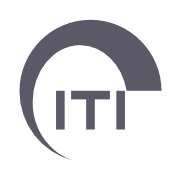Computer Technology Applications in Surgical Implant Dentistry - Consensus Statements - Home
Computer-Assisted Implant Dentistry, ITI CC 2008
Computer Technology Applications in Surgical Implant Dentistry
Definition of Terms
It was important to establish appropriate definitions for the terms to be used in this discussion of the applications of computer technology in implant surgery. The following definitions from the Glossary of Oral and Maxillofacial Implants, 2007(1), were considered:
- Image guidance. The general technique of using preoperative diagnostic imaging with computer-based planning tools to facilitate surgical and restorative plans and procedures.
- Computer-aided navigation. Computer systems for intraoperative navigation, which provides the surgeon with current positions of the instruments and operation site on a three-dimensional reconstructed image of the patient that is displayed on a monitor (in the operating room). The systems aim to transfer preoperative planning on radiographs or computed tomography scans on the patient, in real time, and independent of the position of the patient’s head.
It was felt by the group that these definitions no longer represented the current situation. For the purpose of this consensus review, these definitions were modified to:
- Computer-guided (static) surgery. The use of a static surgical template that reproduces the virtual implant position directly from computerized tomographic data and does not allow for intraoperative modification of the implant position.
- Computer-navigated (dynamic) surgery. The use of a surgical navigation system that reproducesthe virtual implant position directly from computerized tomographic data and allows for intraoperativechanges in implant position.
The group felt that the integration of computerized planning using these systems offers several potential perceived advantages and may result in less complex surgery. By visualizing bone volume preoperatively, it may be possible to place implants more precisely in the available bone, with a consequent reduction in any grafting requirements. Computerized planning also helps avoid anatomical complications and can be used with flapless surgery, which can lead to reduced morbidity. It might even allow for the provision of implant therapy where complex anatomical limitations had previously precluded treatment. The subsequent improved accuracy of implant placement should improve the prosthetic outcome and could also facilitate prefabrication of the prosthesis. Finally, increased surgical precision may lead to improvements in implant survival rates. In time, these systems might have the potential as teaching tools.
References:(1) Laney WR (ed). Glossary of Oral and Maxillofacial Implants. Berlin: Quintessence, 2007.
Consensus Statements
The systematic review paper by Jung et al indicated that in selected situations, computer technology applications are sufficiently accurate to justify use. There were, however, concerns over some of the reported figures for accuracy, which indicated a maximum deviation from the planned position that exceeded clinically acceptable parameters. It was suggested by the author of the paper that this might be due to intraoperative movement of the “static” surgical template. When the mean errors were considered, these could be considered adequate for many clinical applications. There was, however, a feeling that the learning curve for this technique-sensitive procedure could be quite steep, so caution should be exercised in the early stages of acquiring these skills.
The reviewed papers failed to demonstrate any long-term data to support an assumption that implant and prosthetic survival and success with computer-guided and computer-navigated surgical techniques are similar to those of traditional surgical interventions. It was felt by the group that although many components of this emerging computer-aided technique are the same as in conventional practice, it would be wrong to assume that the survival and especially the success rates would be the same.
Unfortunately, the rapid development of this poorly documented technology in such a commercially driven marketplace has led to unrealistic clinical expectations for the efficacy and ease of use of this technology. Again, the group advised caution when interpreting the claims made by companies promoting this computer technology for implant surgery.
Clinical Recommendations
It was generally felt by the group that both computer-guided and computer-navigated surgery may optimize several treatment processes, and with appropriate training, experience, and pre-surgical planning, could be useful in situations where there is complex anatomy and where minimally invasive surgery is desirable. They can also be used for the optimization of implant placement in critical esthetic cases and for immediate loading with preformed restorations.
Downloads and References
Share this page
Download the QR code with a link to this page and use it in your presentations or share it on social media.
Download QR code